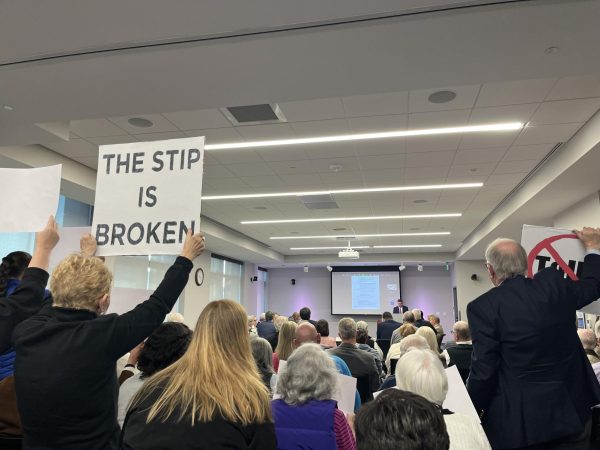Begin the debt ceiling countdown
September 13, 2013
Treasury Secretary Jacob Lew recently announced that the government will arrive at its debt limit in the middle of October—much sooner than expected, and implying that the United States government will no longer be able to borrow money unless Congress can agree to raise this number once again. Easier said than done.
The government is about to give another emphatic display of its ineffectiveness.
Currently, the debt ceiling is sitting pretty at 16.7trillion dollars. So, if you were to place 10 million dollars in a fund every single day since the birth of Jesus, you would reach 16.7 trillion dollars in the year 4575. If you stacked up the $100 bills it would take to make 16.7 trillion dollars, it would be equivalent to over 2061 Mt. Everests set on top of one another. It’s a lot of money.
Regardless, the nation is quickly approaching the need to raise the ceiling again, as there are nearly $50 billion worth of expenditures every day. This is nothing new, as the debt limit has been changed 78 separate times in the last 53 years, but there has been a struggle to do so lately. If no action is taken, there will be a debt ceiling crisis, default on the government’s obligations and a virtual government shutdown.
President Harry S. Truman nicknamed the 80thcongress the “Do Nothing Congress” because of the amount of bills they opposed during their tenure. That particular congress passed 900 bills to earn the “do-nothing” stigma. By comparison, in the entire first six months of the current Congress session, a measly 13 laws were passed. This puts them on track to pass a total of 52 bills in their two years, or about 5 percent of the total passed by the “Do Nothing Congress.”
By great lengths, the biggest headline from Congress this year was the 12 hour 52 minute filibuster led by Rand Paul in March.
It’s no secret that the extreme partisanship has made it difficult for legislation of any kind to make it through congress. A Gallup poll shows the disapproval rating of the current Congress at 78 percent, the highest of any Congress ever recorded. As a rule of thumb, if a bill somehow makes it through the Senate, it takes a small miracle for the House to also stamp it with approval.
A bill’s proposal is like a vegetarian trying to convince a Brazilian steakhouse to serve bottomless salads instead of mountains of beef. I believe it is safe to say we will have to wait until the 11th hour to hear about an escape from government shutdown this October.
So far, there have been months of private talks between lawmakers to come up with a resolution to the problem, but to no avail. Discussions have recently stopped and it is clear there will be no bipartisan agreement in the Senate, which puts all the pressure on the House to formulate a plan. With the House Republicans wanting severe budget cuts and the Senate Democrats looking for higher taxes and neither side willing to budge, it may be a long road to a solution.
For now (as per usual) we remain in a deadlock.





















